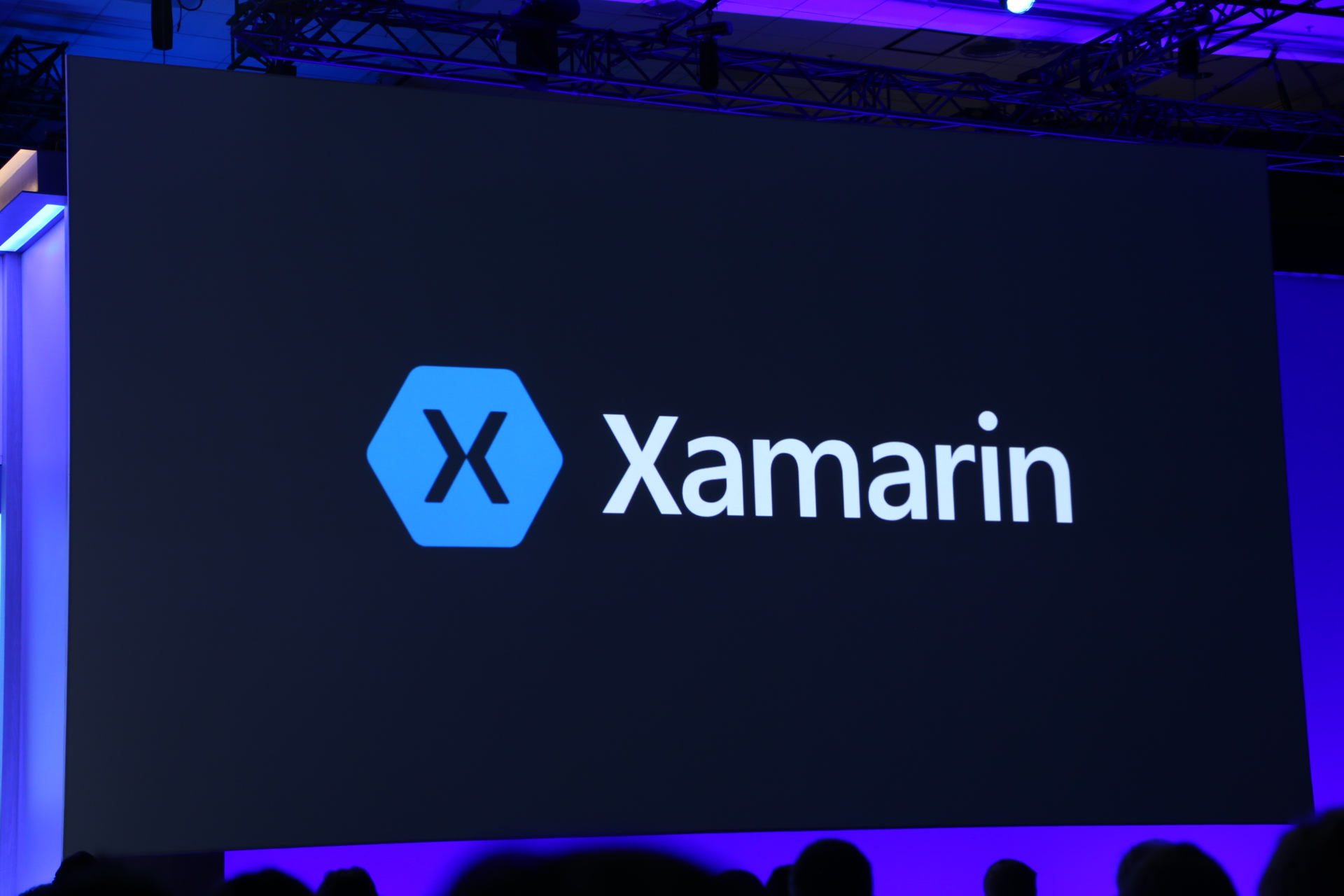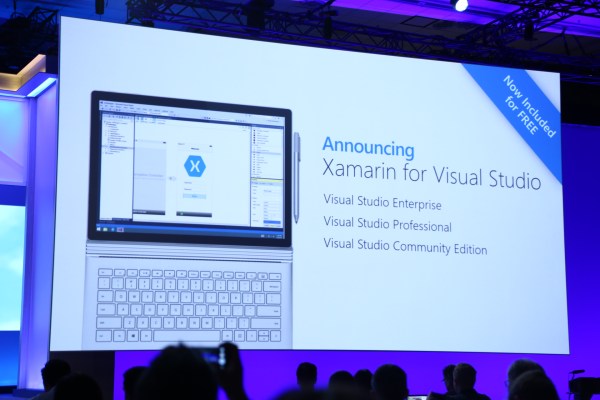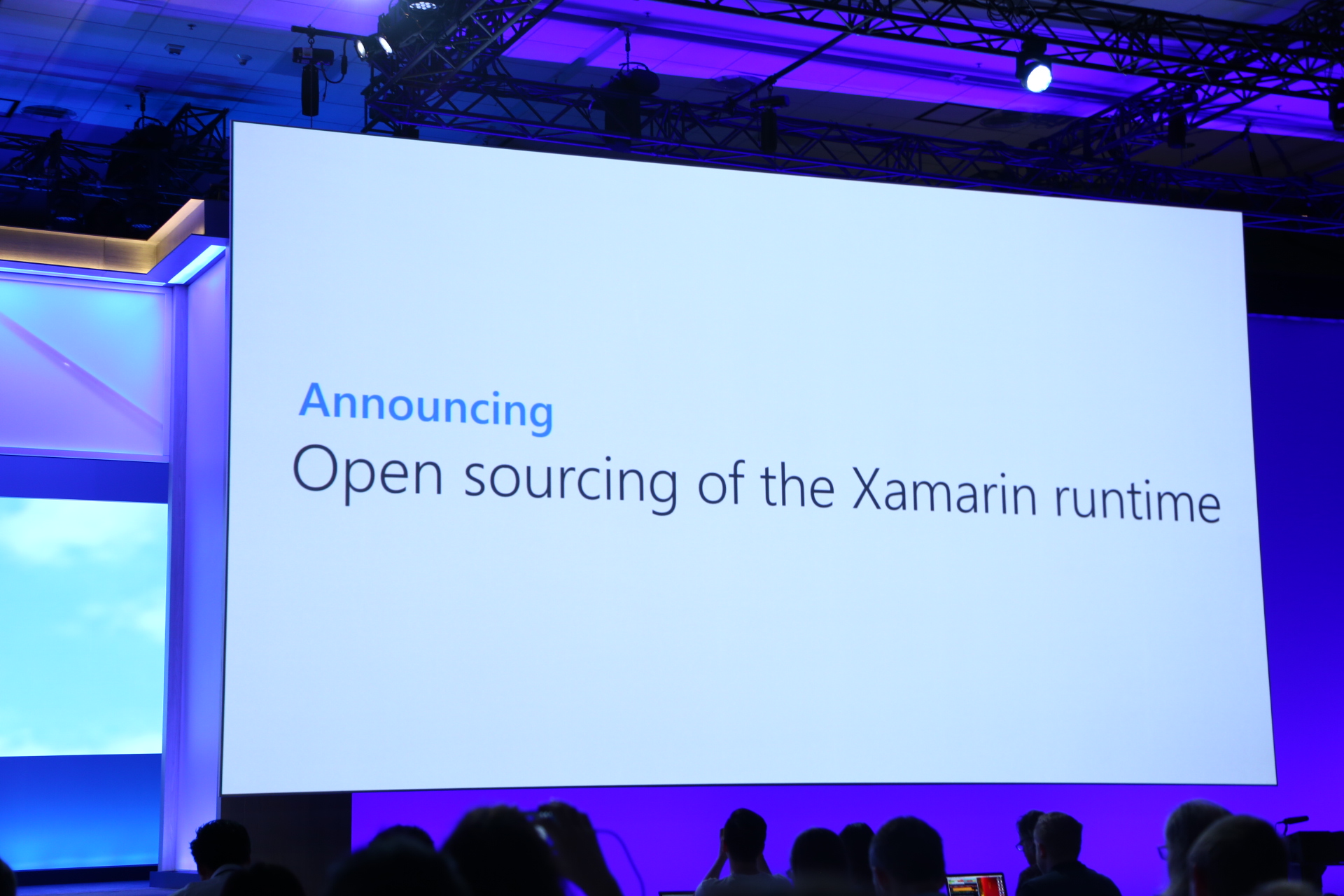Microsoft acquired the cross-platform iOS, Android and OS X development service Xamarin last month, and the new acquisition is already at the center of attention at Microsoft’s annual Build developer conference this week. The company announced during today’s keynote that the core Xamarin tools are now available as part of the free Visual Studio Community edition, and Xamarin Studio for OS X is now available as a standalone community edition (MSDN subscribers will get it, too).
Xamarin’s more advanced enterprise services are being rolled into the Visual Studio Enterprise and Professional subscription service at no additional cost.
 Xamarin previously sold its tools on a subscription basis that ranged from a low-priced $25/month option for independent developers to a $999/year business account and $1,899 enterprise version.
Xamarin previously sold its tools on a subscription basis that ranged from a low-priced $25/month option for independent developers to a $999/year business account and $1,899 enterprise version.
Usage of the Visual Studio Community Edition and the Xamarin Studio community version is limited to academic users, open-source developers and small teams with up to five developers. The Community Edition will include the full Xamarin Studio IDE, but some advanced features like Embedded Assemblies, the Xamarin Inspector Preview and the Xamarin Profiler Preview will only be available through a Visual Studio Enterprise subscription.
The Xamarin Test Cloud, which allows developers to remotely test their apps on real devices, will remain a standalone product. Pricing for this service also doesn’t change, though Visual Studio Enterprise customers will get a 25 percent discount.
As part of this announcement, Microsoft also said that it will make the Xamarin SDK available under the MIT open-source license in the coming months. The tools, which include the runtime, libraries and command line tools, will move under the .NET foundation, which Microsoft announced last year. Microsoft will also soon re-release Mono under the MIT license.
In many ways, this is a logical step for Microsoft. It has already seen quite a bit of success with the Visual Studio Community edition, and it makes sense to apply the same formula to Xamarin. This move is also a clear signal that Microsoft is very serious about cross-platform development and is not just talking a big game.
I expect the boundary between Xamarin and Visual Studio to disappear over time and that Microsoft will roll most of the Xamarin IDE features into Visual Studio over time. Even before the acquisition, Microsoft and Xamarin often worked closely together, and there is already a Xamarin plug-in for Visual Studio, after all.

